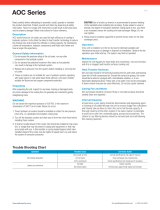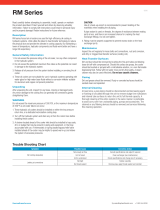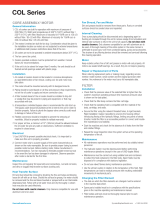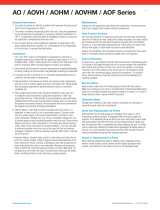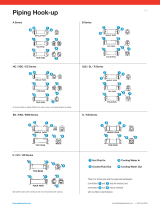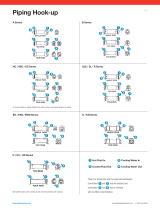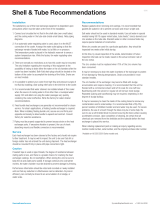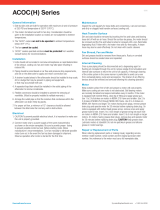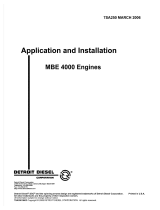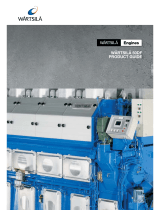Page is loading ...

thermaltransfer.com ttp-sales@apiheattransfer.com +1.262.554.8330
CAUTION If pipe sealant is used on threads, the degree of resistance
between mating parts is less, and there is an increased chance for
cracking the heat exchanger fittings. Do not overtighten.
Operation
Once unit is installed, the system may be operated normally. If the source of
cooling air is other than the main engine fan, be sure that the fan is running.
Maintenance
1. Performance information should be noted on newly installed units so that
any reduction in effectiveness can be detected.
2. Inspect the unit regularly for corrosion and dirty or clogged heat transfer
surfaces. Dirt and dust can be removed by washing, brushing, or blowing
out with compressed air. A steam cleaner is also effective in cleaning dirty
or greasy surfaces. Do not use caustic cleaners.
3. The oil chamber may become filled with sludge accumulation and require
cleaning. It is recommended that the unit be flooded with a commercial
solvent, and left to soak for one-half hour. Repeated soakings and back
flowing may be required, depending on the amount of sludge accumulated.
Read carefully before attempting to assemble, install, operate or
maintain the product described. Protect yourself and others by
observing all safety information. Failure to comply with instructions
could result in personal injury and/or property damage! Retain
instructions for future reference.
Description
DH series mobile oil coolers are used for high-efficiency oil cooling in
hydraulic systems. Units utilize the latest in heat transfer technology to reduce
the physical size and provide the ultimate in cooling capacity. By maintaining
a lower oil temperature, hydraulic components and fluids work better and
have a longer life expectancy.
General Safety Information
1. Do not exceed the pressure rating of the oil cooler, nor any other
component in the hydraulic system.
2. Do not exceed the published maximum flow rates as the potential can
result in damage to the hydraulic system.
3. Release all oil pressure from the system before installing or servicing the
oil cooler.
4. These oil coolers are not suitable for use in hydraulic systems operating
with water-glycol or high water base fluids without a corrosion inhibitor
suitable for aluminum and copper component protection.
Unpacking After unpacking the unit. inspect for any loose, missing or
damaged parts. Any minor damage to the cooling fins can generally be
corrected by gently straightening them.
Installation
WARNING Do not exceed the maximum pressure of 300 PSI, or the
maximum temperature of 350°F as oil cooler failure can occur.
1. These hydraulic oil coolers should be installed on either the low pressure
return line, or a dedicated recirculation cooling loop.
2. Turn off the hydraulic system and drain any oil from the return lines before
installing these coolers.
3. Installation of a fast acting relief/bypass valve is recommended to protect
the oil cooler from excessive pressure and/or oil flow rates.
4. These coolers are normally installed in front of the engine radiator to obtain
the coolest possible air flow.
5. There are no restrictions as to how the unit may be mounted; however, the
unit must be flooded with oil to obtain the full cooling potential.
6. Mount the unit with the brackets* by installing them between any two
adjacent exchanger tubes. Use the most convenient tubes for your specific
location. See figure 1 below for details.
DH Series
Figure 1
Shock Mounting Kit
*(brackets are optional)
Symptom Possible Cause Corrective Action
Not cooling adequately
Not enough air flow Consult specifications and adjust if required
Unit is fouled Clean exchanger (see maintenance)
Unit is undersized Check specifications and change size if necessary
Leaking at connections Not tight Tighten carefully
No thread sealant Remove pipe, apply thread sealant and reinstall
Trouble Shooting Chart
0916
/
